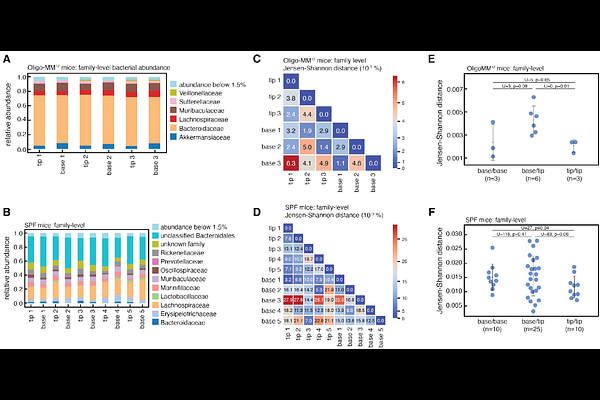Emergent spatial structure in the gut microbiota is driven by bacterial growth and gut contractions

Emergent spatial structure in the gut microbiota is driven by bacterial growth and gut contractions
Greter, G.; Hummel, S.; Kuenzli, D.; Duenki, N.; Ruoho, N.; Burkhardt, P.; Ganguillet, S.; Radiom, M.; Moresi, C.; Laganenka, L.; Hardt, W.-D.; Geisel, S.; Jordi, S.; Misselwitz, B.; Yilmaz, B.; Slomka, J.; Secchi, E.; Stocker, R.; Slack, E.; Arnoldini, M.
AbstractSpatial structure can determine function and evolution of bacterial communities. The gut microbiota is known to be spatially structured longitudinally along the many meters of the gastrointestinal tract, but micro-scale structure in the gut lumen has not been extensively explored. In samples from mice and humans, we show that upper large-intestinal content behaves as a non-Newtonian fluid that changes its viscoelastic properties under the force of gut contractions. This phenomenon is sufficient to explain micro-scale bacterial clustering in the murine cecum, resulting from growth within the gel-like structure of cecum content, and periodic disruption due to peristalsis-driven shear-thinning and clearance. Shear-thinning can also explain the surprising observation that fed beads enter the tip of the mouse cecum by flow along the epithelial cell layer before being mixed into the cecum content. Our study shows mechanistically how spatial structure in the gut emerges through the interplay of microbial and host physiology and highlights the possibility of host control over gut microbiota distribution via gut contractions.